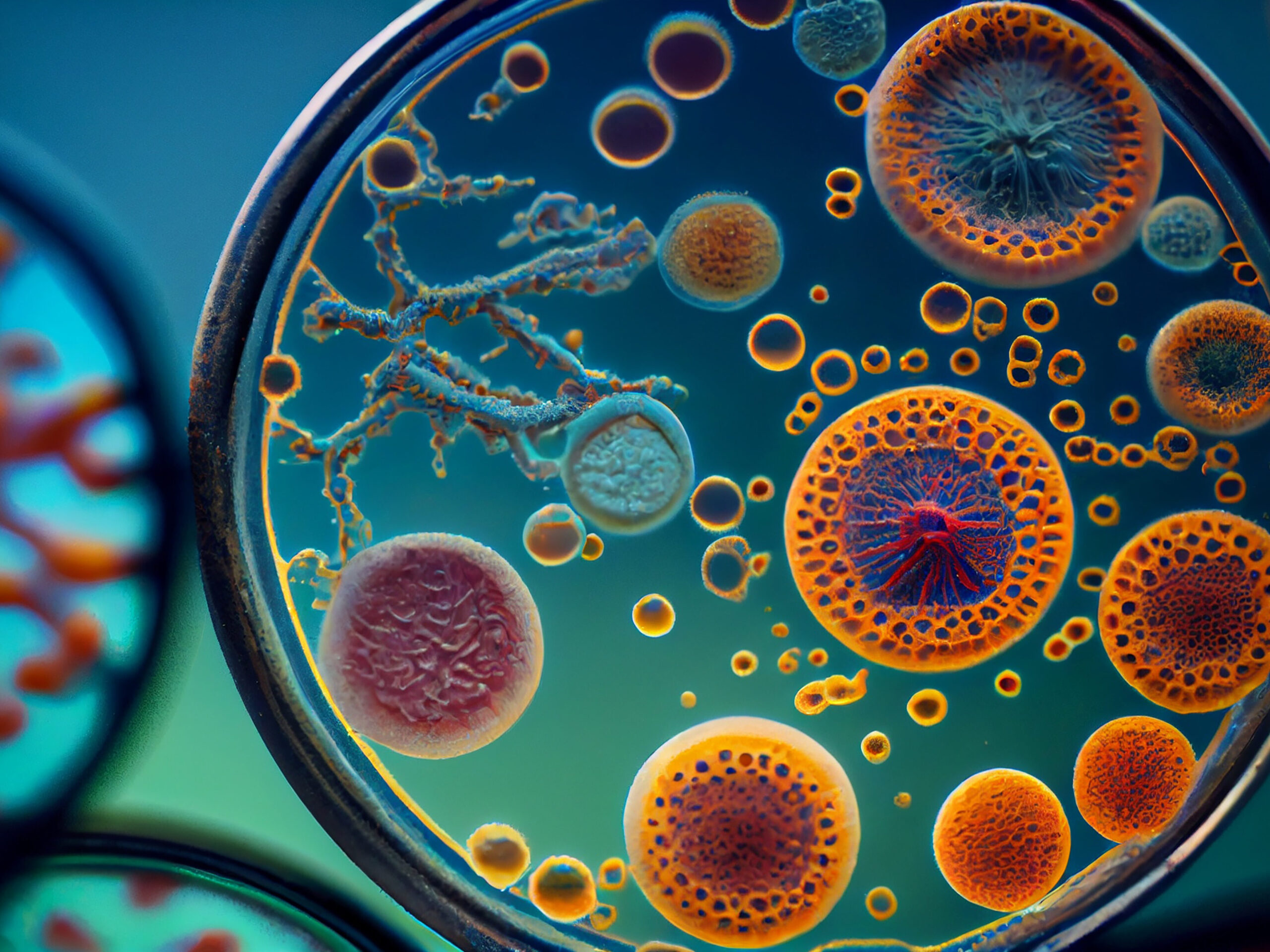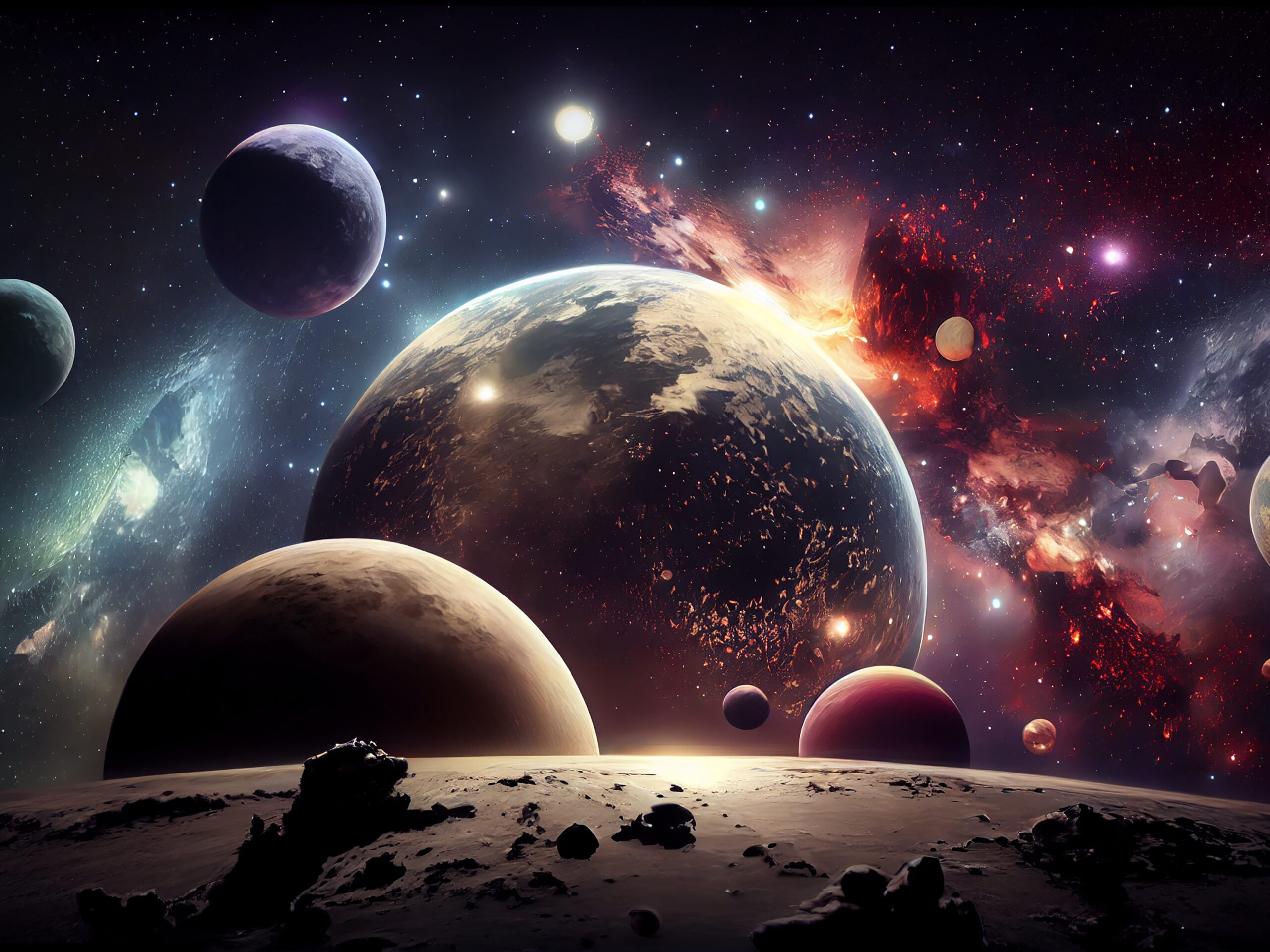Unlocking the Mysteries of Life Beyond Earth
© freepik/vector_corp
In the grand tapestry of the cosmos, one question resonates with profound curiosity and fascination: Are we alone in the universe? Astrobiology, the captivating and multidisciplinary field of scientific inquiry, embarks on a quest to answer this age-old question by exploring the possibilities of life beyond Earth. It delves into the study of the origins, evolution, distribution, and future of life in the cosmos, spanning the realms of biology, chemistry, physics, astronomy, and planetary science.
An insatiable curiosity drives astrobiology to unravel the mysteries of existence in the universe, from the microorganisms thriving in Earth’s most extreme environments to the search for habitable exoplanets beyond our solar system. It contemplates the profound implications of discovering extraterrestrial life and challenges our understanding of life’s diversity and adaptability.
Mars, our neighbouring planet, holds a place of unparalleled fascination in the realm of astrobiology. With its ancient history of flowing water and the tantalizing possibility of subsurface aquifers, Mars is an enticing destination for the search for life beyond Earth. Robotic missions, such as Curiosity and Perseverance, have unveiled clues about the planet’s watery past and the potential for habitable environments, igniting our hopes of discovering microbial life or evidence of past life on the Red Planet. Mars serves as a compelling reminder that, within our solar system, worlds with the potential to nurture life may await our exploration, sparking a profound curiosity about the possibility of life beyond our home planet.
As we embark on this cosmic journey, we peer into the depths of space and time, guided by the belief that the cosmos holds secrets and possibilities that extend far beyond our terrestrial realm. Astrobiology invites us to contemplate the awe-inspiring prospects of life beyond our blue planet and reminds us that, in the vastness of the universe, the search for life is an ever-expanding exploration of our place in the cosmos.
DEFINITION AND SCOPE OF ASTROBIOLOGY

Astrobiology is a multidisciplinary scientific field that seeks to understand the potential for life beyond Earth, including its origins, evolution, distribution, and future. It combines principles and methodologies from various scientific disciplines, including biology, chemistry, physics, astronomy, and planetary science, to explore the conditions and environments in which life could exist elsewhere in the universe.
SEARCH FOR EXTRATERRESTRIAL LIFE
Astrobiology encompasses the search for life beyond Earth. This includes the study of extreme environments on Earth as analogues for extraterrestrial habitats and the development of techniques to detect signs of life on other celestial bodies.
HABITABILITY
Astrobiology investigates the concept of habitability, which involves identifying conditions necessary for life to thrive. This includes studying extremophiles on Earth—organisms that survive in extreme environments—and applying this knowledge to assess the habitability of other planets and moons.
ORIGIN OF LIFE
The field explores the origin of life on Earth and the possibility of life arising elsewhere in the universe. This involves research into prebiotic chemistry, the emergence of self-replicating molecules, and the conditions conducive to life’s formation.
EXOPLANETS
Astrobiology is closely tied to the study of exoplanets (planets orbiting stars outside our solar system). Researchers investigate the potential habitability of exoplanets by studying their atmospheres, compositions, and orbital characteristics.
MARS EXPLORATION
Mars is a focal point for astrobiology due to its potential habitability and the search for signs of past or present life. Missions like the Mars rovers, Curiosity and Perseverance, play a critical role in this exploration.
OCEAN WORLDS
Astrobiology extends to the study of ocean worlds like Europa (Jupiter’s moon) and Enceladus (Saturn’s moon). These icy moons harbour subsurface oceans that may provide environments suitable for life.
BIOSIGNATURES
Researchers in astrobiology develop methods to identify biosignatures, which are chemical or physical markers that could indicate the presence of life on other planets or moons.
FERMI’S PARADOX
The field addresses Fermi’s Paradox, which questions the apparent absence of extraterrestrial civilizations despite the vast number of potentially habitable planets. Astrobiology seeks to understand why we have not yet detected extraterrestrial life.
ETHICAL AND PHILOSOPHICAL IMPLICATIONS
Astrobiology explores the ethical, philosophical, and societal implications of discovering extraterrestrial life, including how such a discovery might impact our worldview and approach to space exploration.
THE SEARCH FOR EXTRATERRESTRIAL LIFE

The search for extraterrestrial life is the beating heart of astrobiology, a quest that transcends boundaries and kindles our collective imagination. This relentless pursuit explores the possibility of life beyond our blue planet through a multifaceted approach that encompasses the following key aspects:
HABITABILITY FACTORS
Understanding what makes a world habitable is paramount. Astrobiology identifies key habitability factors, such as the presence of liquid water, stable environments, and access to essential elements like carbon, nitrogen, and energy sources. These factors guide the search for extraterrestrial environments conducive to life.
EXPLORING OUR SOLAR SYSTEM
The search extends to our celestial neighbours within our solar system. Mars, with its tantalizing history of water, is a prime target. Robotic missions like Curiosity and Perseverance investigate the Red Planet’s past and present habitability, probing for signs of microbial life.
EXOPLANETS AND BIOSIGNATURES
As we discover exoplanets in the habitable zones of distant stars, astrobiologists seek to identify biosignatures—indicators of life—within their atmospheres. Techniques like spectroscopy are employed to detect molecules like oxygen and methane that could signal the presence of life.
SETI AND COMMUNICATIONS
The Search for Extraterrestrial Intelligence (SETI) is a complementary endeavour that listens for signals or messages from intelligent civilizations. It underscores the diverse ways in which we explore the possibility of life, whether microbial or sentient, elsewhere in the universe.
HABITABILITY AND LIFE IN EXTREME ENVIRONMENTS

Habitability, the study of conditions that can support life, forms a foundational pillar of astrobiology, guiding the search for life beyond Earth. One of the most captivating facets of this field is the investigation of life in extreme environments on Earth, where life defies conventional expectations and thrives against the odds. Here, we delve into the remarkable world of extremophiles and the environments that challenge and redefine our understanding of habitability:
EXTREMOPHILES AS PIONEERS
Extremophiles, microorganisms that flourish in extreme conditions, are the vanguards of astrobiology. They inhabit environments such as acid lakes, deep-sea hydrothermal vents, ice-capped lakes, and scorching deserts, demonstrating life’s adaptability to the most inhospitable realms.
EXTREMES OF TEMPERATURE
Astrobiology explores life at both ends of the temperature spectrum. Thermophiles endure scalding temperatures, often exceeding 176°F (80°C), while psychrophiles thrive in the bitter cold of polar regions, where temperatures plummet below freezing.
HIGH-PRESSURE HABITATS
Life prevails in high-pressure environments, such as the deep ocean floor, where hydrostatic pressure is immense. Barophiles are organisms uniquely adapted to these crushing conditions.
RADIANT-RESISTANT ORGANISMS
In radiophilic environments, where ionizing radiation abounds, radioresistant microorganisms endure lethal levels of radiation. These extremophiles have implications for understanding potential life on planets with higher radiation levels.
ANAEROBIC AND HYPERSALINE HABITATS
Anaerobic microbes thrive in the absence of oxygen, residing in places like oxygen-depleted sediments. Halophiles, on the other hand, flourish in hypersaline environments like salt flats and brine pools.
SUBSURFACE ECOSYSTEMS
Life can be found deep within the Earth‘s crust, relying on geothermal energy and subsurface resources. These subsurface ecosystems hint at the possibility of subterranean life on other worlds.
VOLCANIC ENVIRONMENTS
Volcanic landscapes, including hydrothermal vents on the ocean floor and volcanic hot springs, host thermophilic organisms and provide insights into the potential for life on other volcanically active bodies.
SURVIVING DESICCATION
Some extremophiles can withstand desiccation (extreme dryness) and revive when water returns. This resilience has implications for the search for life on arid planets like Mars.
BIOSIGNATURES

In the quest to identify signs of life beyond Earth, astrobiologists rely on a crucial toolkit: biosignatures. These are telltale markers—chemical or physical—that could reveal the presence of life on other celestial bodies. Biosignatures serve as a bridge between the known and the unknown, guiding our search for extraterrestrial life.
BIOGENIC GASES
Gases like oxygen (O2) and methane (CH4) are primary biosignatures. Oxygen, produced by photosynthetic organisms on Earth, can accumulate in the atmosphere through biological processes. Methane, while it can have abiotic origins, can also be indicative of life when detected alongside other biosignatures.
ATMOSPHERIC DISEQUILIBRIUM
The presence of gases like oxygen and methane in an exoplanet‘s atmosphere in a state of disequilibrium—where they coexist despite chemical reactivity—can be a strong indicator of biological activity.
PHOTOSYNTHETIC PIGMENTS
Pigments like chlorophyll are used by photosynthetic organisms to capture energy from sunlight. Detection of these pigments or their spectral absorption features in the visible spectrum could point to photosynthesis.
ISOTPE RATIOS
Isotopic signatures, such as variations in the ratios of carbon isotopes (e.g., 12C and 13C) or nitrogen isotopes (e.g., 14N and 15N), can provide insights into the metabolic processes of living organisms.
ORGANIC COMPOUNDS
Organic molecules, particularly those with complex structures, are essential components of life as we know it. The presence of amino acids, nucleic acids, and other organic compounds can suggest the possibility of life.
COMPLEX MACROMOLECULES
Detection of complex macromolecules like proteins and DNA could serve as compelling evidence of biological activity. The identification of specific amino acids or genetic sequences may offer stronger biosignatures.
REDOX REACTIONS
Chemical reactions involving the transfer of electrons (redox reactions) are fundamental to life’s energy metabolism. Detecting such reactions in an environment could indicate biological processes.
SURFACE FEATURES
Physical features on planetary surfaces, such as stromatolites (layered structures created by microbial communities) or fossilized remains, can provide evidence of past or present life.
CHEMICAL GRADIENTS
Chemical gradients, where variations in chemical concentrations occur over a short distance, can be indicative of microbial activity, particularly in subsurface environments.
BIOFLUORESCENCE
The phenomenon of biofluorescence, where organisms absorb and re-emit light at different wavelengths, may be observable in specific environments and could hint at the presence of life.
TEMPORAL VARIABILITY
Observing temporal changes, such as seasonal fluctuations in gas concentrations or surface features, may provide additional evidence of biological processes.
Astrobiology, a discipline that straddles the boundaries of multiple scientific domains, emerges as a beacon of human curiosity and exploration. This quest to unravel the mysteries of life beyond Earth takes us on an awe-inspiring journey through the cosmos, driven by insatiable curiosity and an unyielding dedication to understanding the universe’s most profound questions.
Astrobiology explores the potential for life in extreme environments on Earth, the habitability of exoplanets orbiting distant stars, and the tantalizing prospect of extraterrestrial life within our solar system. It confronts the enigma of life’s origins, considers the ethical and philosophical implications of finding life beyond Earth, and even reaches for the possibility of communicating with other intelligent beings in the cosmos. Each revelation, whether from the icy depths of an alien moon or the spectral analysis of a distant exoplanet, reaffirms that we are but one thread in the intricate weave of the universe.
Astrobiology stands as a testament to our unrelenting pursuit of knowledge, a journey that unites humanity in our shared fascination with the cosmos and the timeless question: Are we alone? The answer, yet unknown, beckons us onward, promising that the pursuit of astrobiology will continue to inspire, enlighten, and reshape our perception of life and the universe itself.
